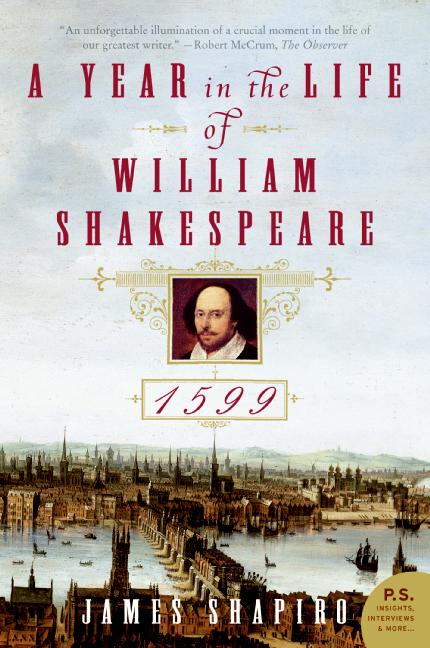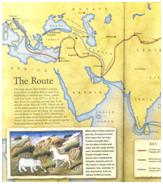 Cyndy and I are huge proponents of studying history and literature together, and studying them chronologically. This books is perhaps the best example I have ever run across illustrating how much an understanding of an author’s context increases your understanding of the literature that he wrote. Shakespeare is arguably the most brilliant writer in the entire pantheon of English literature. He draws on universal themes and weaves a spell with language that both entertains, provokes, instructs, and challenges. His complex understanding of human nature, human emotions, and human passions is un-paralleled. The setting and world-view of his plays is decidedly Christian, but not simplistically so. For Shakespeare, guilt and sin are real objective realities. But so are repentance, redemption, love and joy.
Cyndy and I are huge proponents of studying history and literature together, and studying them chronologically. This books is perhaps the best example I have ever run across illustrating how much an understanding of an author’s context increases your understanding of the literature that he wrote. Shakespeare is arguably the most brilliant writer in the entire pantheon of English literature. He draws on universal themes and weaves a spell with language that both entertains, provokes, instructs, and challenges. His complex understanding of human nature, human emotions, and human passions is un-paralleled. The setting and world-view of his plays is decidedly Christian, but not simplistically so. For Shakespeare, guilt and sin are real objective realities. But so are repentance, redemption, love and joy.
If I could recommend only one book to students to help them understand Shakespeare, it would be this volume by James Shapiro.
1599 was the “annus mirabilis” for Shakespeare and for England. In that year, Elizabeth celebrated her 66th birthday and the 41st year of her reign. Only eleven years before, the little island realm of England had been threatened with extinction and absorption by the powerful global empire of Spain and its fearsome 150-ship Armada. The Armada was to ferry an invasion force across the English Channel – hardened soldiers, veterans of the wars in the Netherlands and sure to bring with them a legion of monks and inquisitors with their instruments of torture. English protestants had prepared themselves for martyrdom. And then God had miraculously delivered England and “good Queen Bess.” The lumbering Spanish ships had been pursued up the channel by the small quick English terriers commanded by the Queen’s little pirate, Drake and his fellow-admirals Howard and Hawkins. The Armada failed to rendezvous with the invasion army and was then swept north by storms. Two thirds of the Spanish ships were lost and England celebrated a miraculous deliverance.
In a marvelous coincidence, 1588 is also the year that a young (24 years old) actor / poet / playwright began his career in London. Over the next 25 years, until his death in 1613, he wrote 36 (or perhaps 38) plays. Usually only one or two a year, but the year 1599 was special. 1599 is the year that Shakespeare made the transition from employee to entrepreneur. He was 35 now and joined with a company of actors as a part-owner of a newly constructed theater called The Globe. Doing everything in his power to insure the success of the new venture, in 1599 he doubled his usual output and wrote FOUR plays. And what plays they were: Henry V, Julius Caesar, As You Like It, and Hamlet!
The first of the plays was Shakespeare’s greatest historical drama, Henry V. The mood and character of Henry V are shaped by the political events of the day. The Queen’s favorite courtier, the dashing military commander, Robert Devereaux, the Earl of Essex had been dispatched by her to put down a rebellion in Ireland. The rebellion had overtones of a religious war (the Irish rebels were Roman Catholics) and threatened to bring the Spanish out again for a another attempt to invade and conquer England. Shapiro shows, convincingly and in a riveting and entertaining style how the political events of the year made their way in to Shakespeare’s play. Essex’s subsequent rebellion and fall into disfavor with the Queen provides the backdrop to Julius Caesar. Essex attracted a number of malcontents who eventually involved him in a plot to stage a palace coup and displace Elizabeth. The plot failed and Essex was executed.
Shakespeare’s third play reflects more gentle, playful preoccupations. In As You Like It, there are numerous echoes, not of the politics of London and the Court, but the pastoral simplicity of Stratford and the nearby Forest of Arden. In the summer of 1599, Shakespeare made a trip home and spent time with his family, his neighbors, and the town of his youth. Shapiro shows us how Shakespeare worked all of the varied facets of his life into this delightful tale of love and mistaken identity.
Toward the end of the year, as Shakespeare continued his burst of creativity, he composed Hamlet. The plot is not original, but the depth of the characters that Shakespeare creates is a work of unique genius. Even the style of his writing and the vocabulary he uses is unique. Shapiro’s summary of the genius of Hamlet, the way in which it comments on contemporary issues for Shakespeare’s world while remaining timeless is a tour de force!
I cannot recommend this book too highly. I am, more than ever, convinced that it is impossible to understand Shakespeare without studying the details and the events of the twenty-five years that compass his life as a playwright. Thirty-six plays in twenty-five years. There never was another like him, nor shall ever be. To understand the plays, and the man, you must understand the times. There is no better introduction to both than this book by James Shapiro.
Originally published in 2006, A Year in the Life of William Shakespeare – 1599 is available in paperback, 432 pages for $14.95 directly from Greenleaf Press by.
– Rob Shearer
Director, Schaeffer Study Center
Publisher, Greenleaf Press



